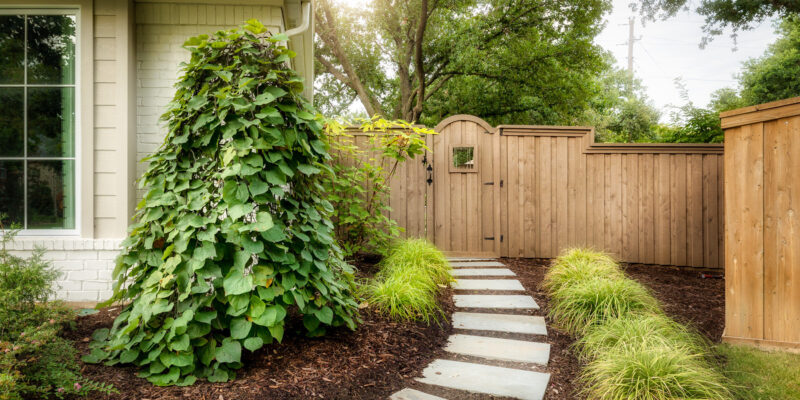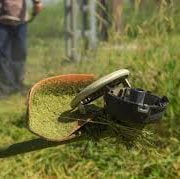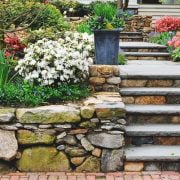In the grand tapestry of outdoor design, patios, walkways, and driveways are no ordinary threads. Far from being just functional paths and platforms, these elements are real scene-stealers that can impress even the most random of passersby. A soothing patio beckoning you to put your feet up after a hard day’s work, a scenic walkway weaving its way through a verdant garden, or a sturdy driveway rolling out the welcome mat for you – the artistry of crafting these spaces is a blend of thought, creativity, and, let’s admit it, a fair dash of patience.
Here, we’ll journey through the importance of these structures, meander through design inspiration, get up close and personal with material choices, and top it all off with some vital maintenance tips to ensure these eye-catching spaces stand the test of time.
Design Inspiration
Crafting knockout patios, walkways, and driveways starts with a generous helping of inspiration. When sketching out these elements, don’t forget to take a good look around at the existing landscape and architecture. A little nudge from Mother Nature can lead to designs that blend like a dream with your surroundings. Imagine a patio that traces the garden’s curves or a walkway that mimics a river’s path with strategically placed stepping stones – it’s instant tranquility and balance at your doorstep.
Whether you’re leaning toward the sleek lines of modern design, the stark simplicity of contemporary style, the rustic charm of old-world aesthetics, or the comforting familiarity of traditional designs, there’s a treasure trove of options awaiting you. Top that with add-ons like pergolas, water features, fire pits, or outdoor furniture, and you’re setting the stage for an inviting, gathering-friendly space that’s a hop, skip, and jump away from your living room.
Material Choices
Choosing the right materials for your patios, walkways, and driveways is like picking the right ingredients for a gourmet dish – it can make or break the result. And just like your pantry, there’s a myriad of options here, too, each with its own set of pros and cons.
- Brick – Bricks bring a touch of classic elegance to any outdoor space. With a variety of colors, shapes, and patterns, they’re a designer’s delight. Though they demand some regular TLC, they promise great durability and are relatively easy to install. Be mindful, though; they may settle over time, leading to uneven surfaces.
- Concrete – Versatile, cost-effective, and low-maintenance, concrete is like the all-rounder of building materials. Whether you fancy custom designs or prefer the high-end look of natural stone, there’s a concrete option for you. Just remember to keep an eye out for cracks, as they can sneak up on you.
- Stone – Natural stone, like flagstone, slate, or bluestone, lends a touch of grandeur to your outdoor spaces. Each piece is unique, just like us, and they can weather harsh conditions without batting an eyelid. But elegance comes at a price – both in terms of cost and the need for skilled installation.
- Pavers – Available in various shapes, sizes, and colors, concrete or clay pavers are a popular choice for those with a penchant for patterns and designs. They’re a breeze to install and offer impressive durability. They also make repairs easy-peasy, with individual units being replaceable if damaged. But do keep an eye out for weeds playing peekaboo between the pavers.
Installation Techniques for Patios, Walkways, and Driveways
Plan and Design
It all starts with a blueprint. Determining the size, shape, and material of your outdoor features will set the stage for a smooth installation. A meticulously planned and designed space is more than just functional – it’s a visual treat that complements your property.
Prepare the Area
Start with a clean slate. Clear away any grass, plants, or debris, then excavate to about 8-10 inches. Good drainage and a firm base are key to preventing future settling. So, tamp down that soil – it’s the cornerstone of a stable patio, walkway, or driveway.
Install the Base
A base layer of crushed stone or gravel provides much-needed stability and drainage. Then comes a layer of sand, allowing for minor adjustments and ensuring an even paver layout. Remember, a firm foundation is the first step toward a flawless finish.
Lay the Pavers
Here’s where your design comes to life. Start at one corner and gently tap each paver into place with a rubber mallet. Make sure to check for level – no one likes a wobbly walkway! When it comes to this kind of job, you can always get help by finding a good landscaper in Victoria, B.C.
Cut the Pavers
Need custom cuts for edges and corners? A saw or chisel will do the trick. Precise cuts contribute to a neat, professional finish that’s a feast for the eyes.
Add Edging
Edging is the icing on the cake – both functional and decorative. It holds pavers in place and adds a neat finishing touch to your design.
Fill the Joints
Finally, sweep joint sand into the gaps between pavers. It stabilizes the surface, prevents weed growth, and gives your design a cohesive look.
Maintenance: An Ounce of Prevention
Keeping patios, walkways, and driveways looking their best is like any good skincare routine – it requires consistency. Regular cleaning, periodic sealing, timely repairs, and smart choices like sand or polymeric sand between pavers can keep weed growth at bay and ensure your spaces stay as gorgeous as the day they were installed.
Conclusion
Patios, walkways, and driveways are so much more than functional spaces. They’re visual symphonies that can amplify the beauty of any property, leaving guests with lasting impressions. By drawing inspiration from the world around us and choosing materials that echo nature’s bounty, we can craft spaces that are a delight to behold. But remember, the magic lies in the details – proper installation and regular maintenance can ensure your outdoor features continue to charm for years to come. So, let’s roll up those sleeves and turn that outdoor space into an awe-inspiring sanctuary. Let’s create lasting impressions, one paver at a time.














Comments